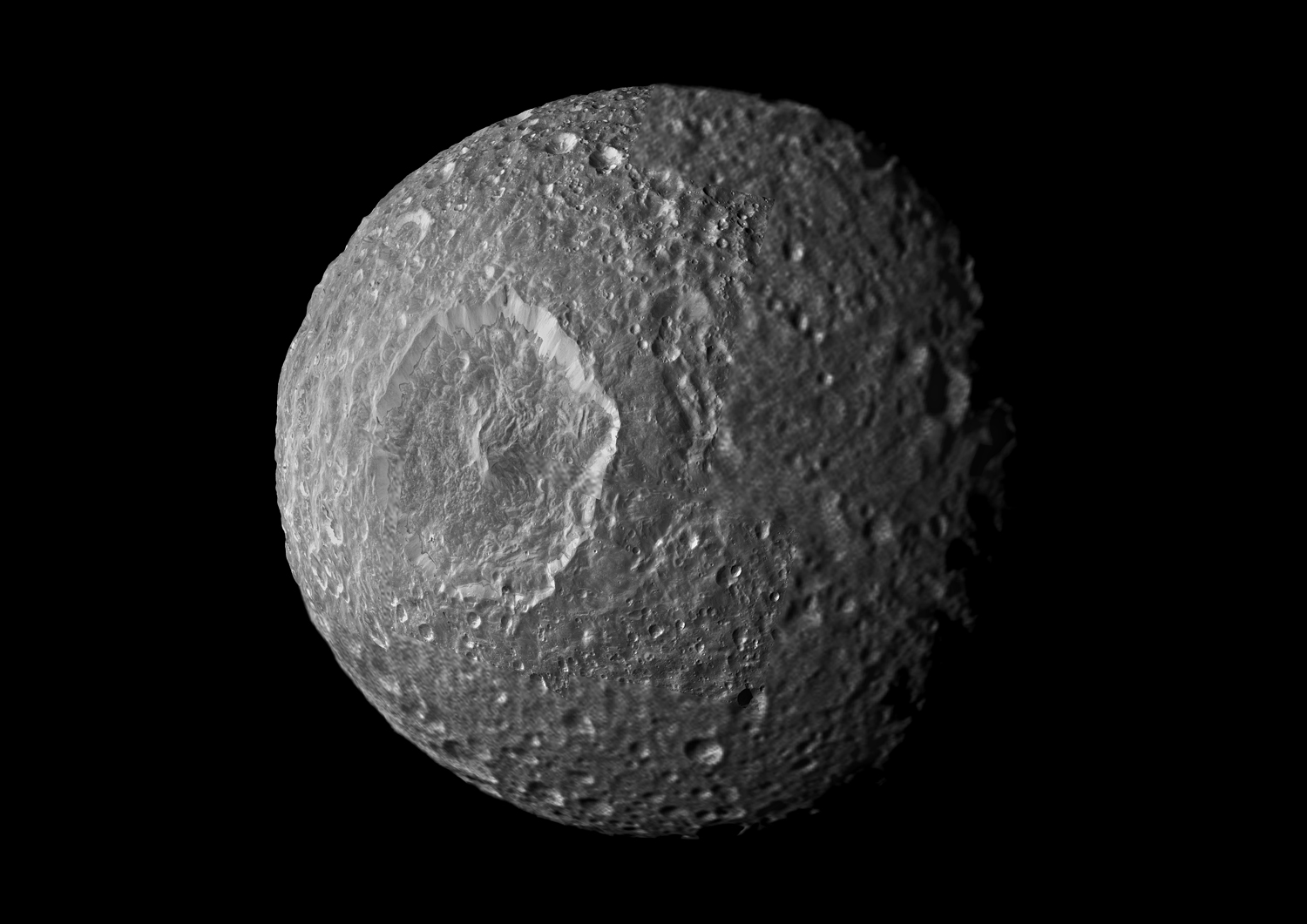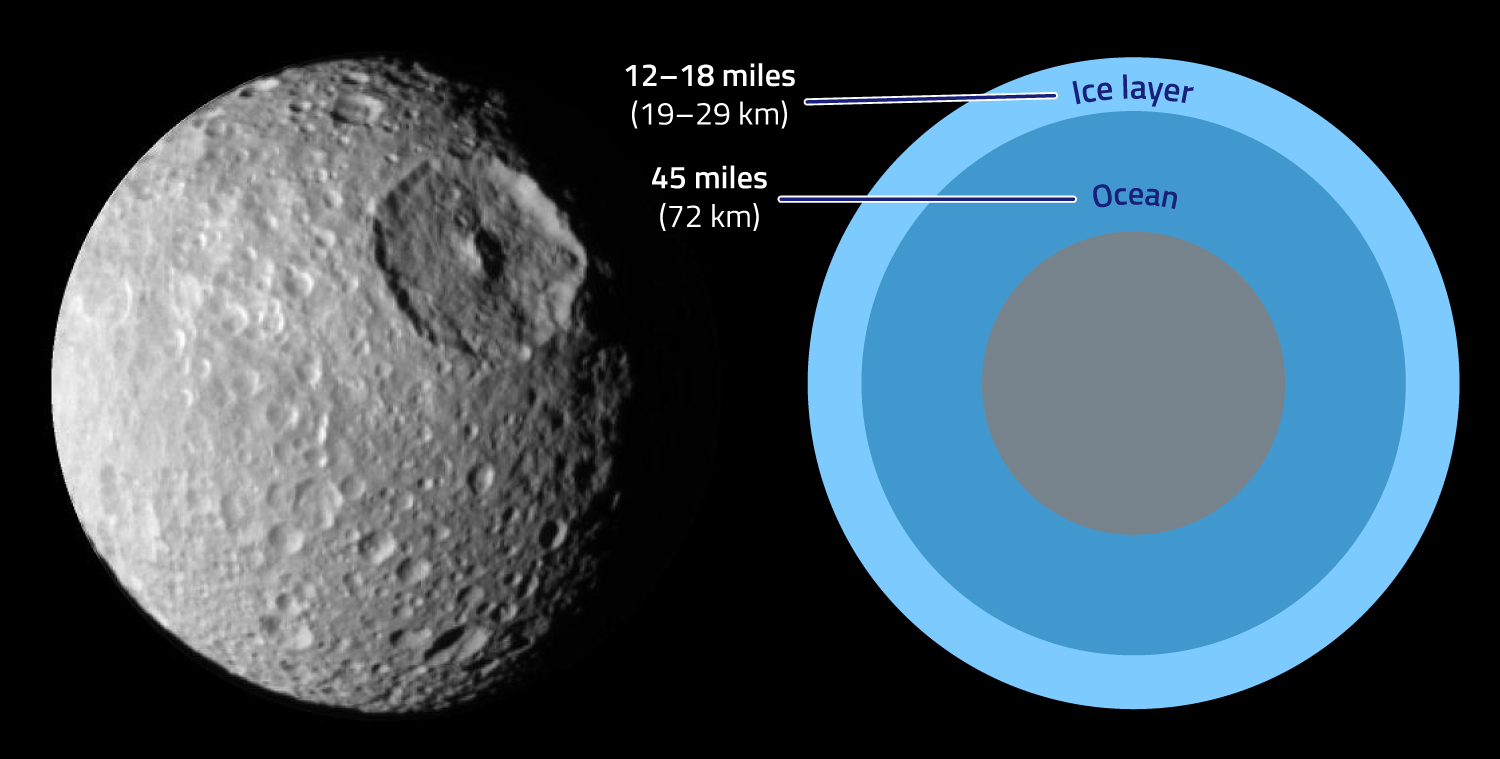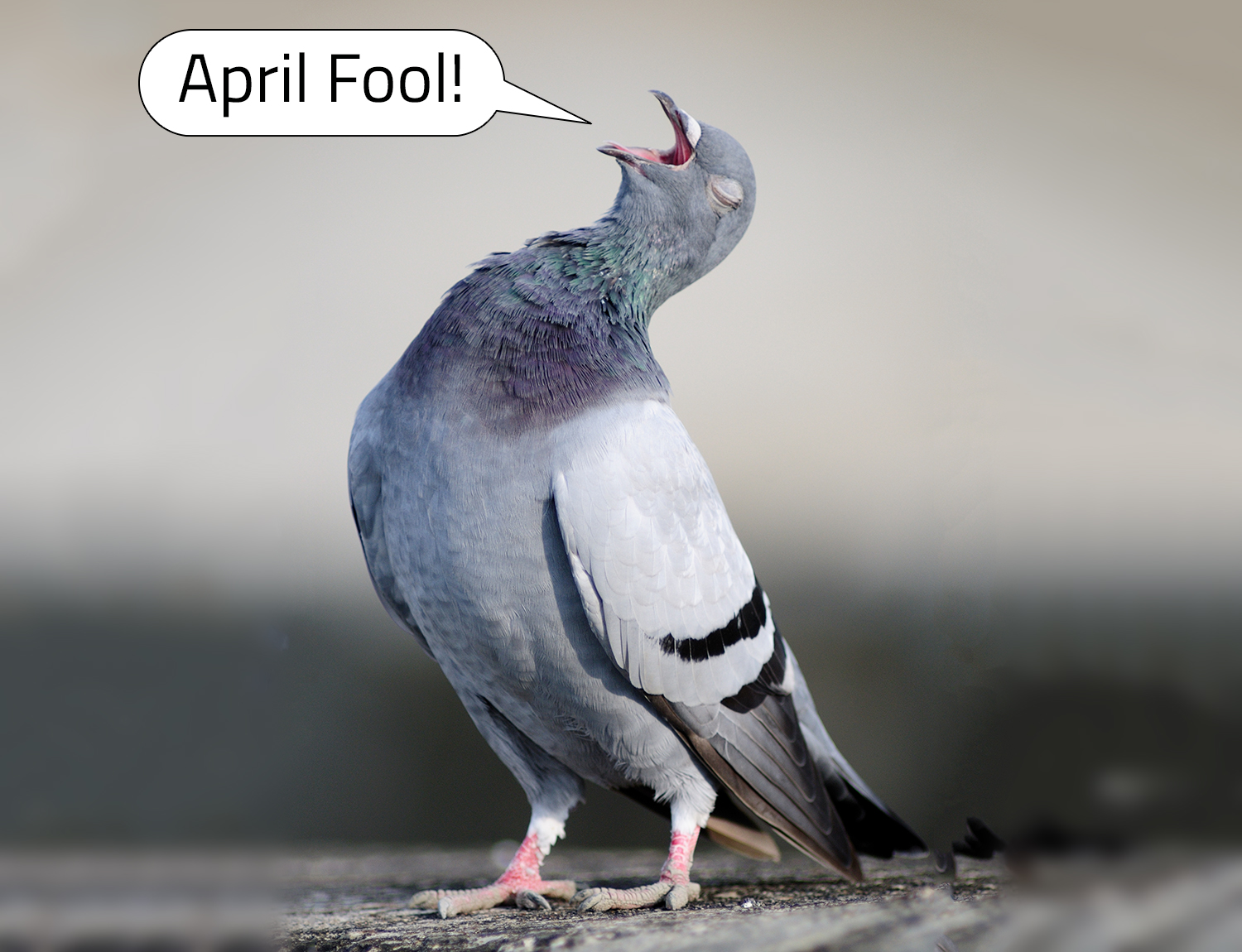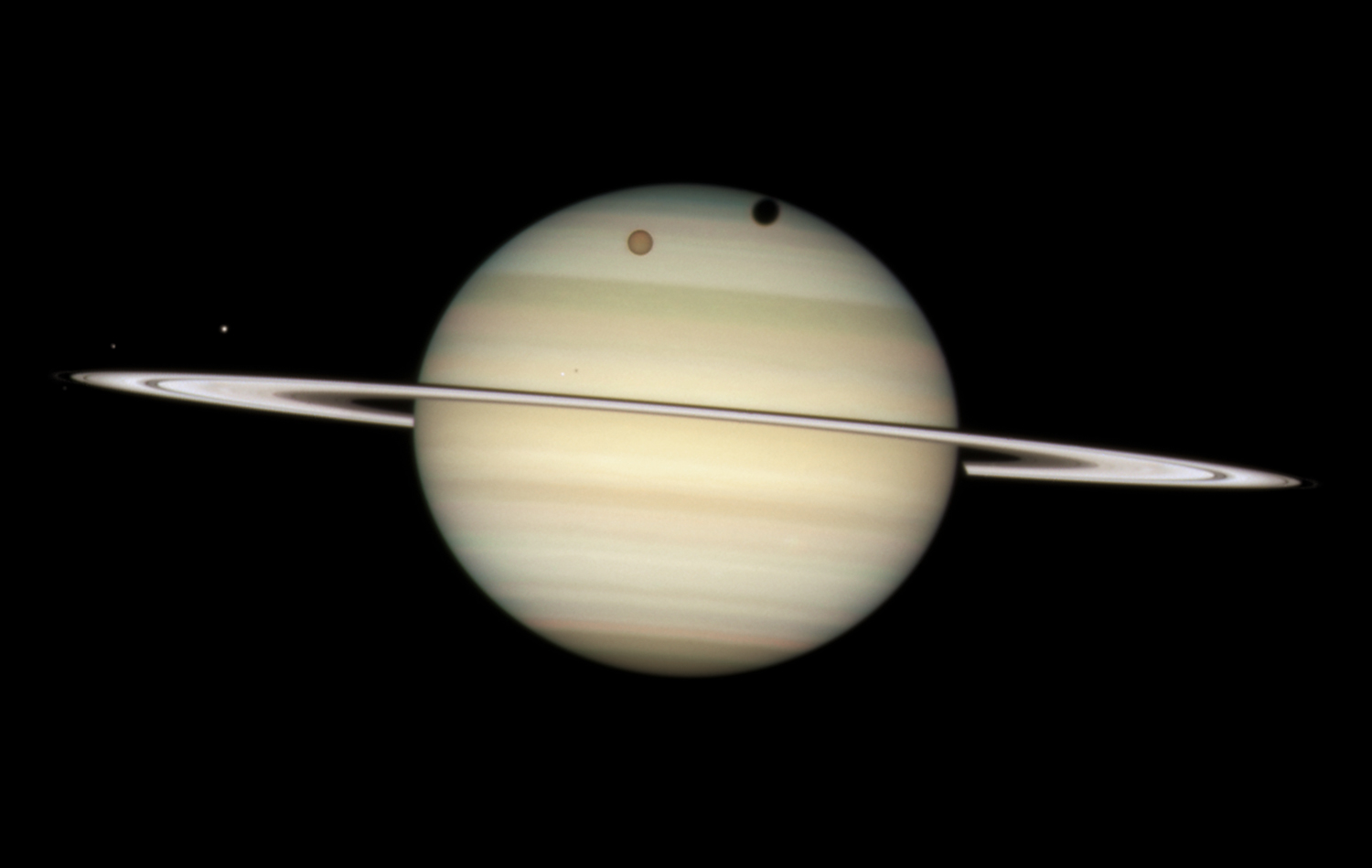A Moon with an Ocean

NASA/JPL/Space Science Institute
Mimas, one of Saturn’s moons, is known for the large crater that makes it look like the Death Star from the Star Wars movies.
Could life beyond Earth exist in our own solar system?
Scientists have discovered that there’s an ocean hidden beneath the icy surface of Mimas, one of Saturn’s moons. The finding suggests there may be more liquid water—which is needed to support life as we know it—beyond Earth than scientists had previously thought.
Until recently, Mimas’s biggest claim to fame may have been that a large crater on its surface makes it look like the Death Star from the Star Wars movies. Other than that, astronomers thought it was just a ball of ice. But when scientists studied images and data collected by a spacecraft called Cassini, they learned that Mimas’s orbit around Saturn is affected by something in the moon’s interior. Further calculations revealed the existence of an ocean.
Scientists believe that the ocean is 12 to 18 miles (20 to 30 kilometers) under the icy surface of Mimas, and that the water is about 45 miles (72 kilometers) deep. With a diameter just under 250 miles (400 kilometers), Mimas is tiny. The ocean makes up about half of its volume.

Mimas isn’t the only moon with an ocean under its surface. Two of Saturn’s other moons, Titan and Enceladus, and two of Jupiter’s moons, Europa and Ganymede, also have hidden oceans. As scientists continue to observe moons, they may find additional oceans to add to the list.
“If Mimas hides a global ocean, this means that liquid water could lie almost anywhere,” Valéry Lainey, one of the scientists involved in the recent discovery, told CNN. “We already have serious candidates for global oceans [on moons such as] Callisto, Dione, and Triton.”
Since liquid water is necessary to support life as we know it, finding oceans in our own solar system raises a lot of intriguing questions. Scientists say the ocean on Mimas is very young—less than 25 million years old. It probably formed too recently for life to have evolved within it. But it’s likely that scientists will continue to take a close look at the icy moons in our solar system for signs of oceans as well as life.



